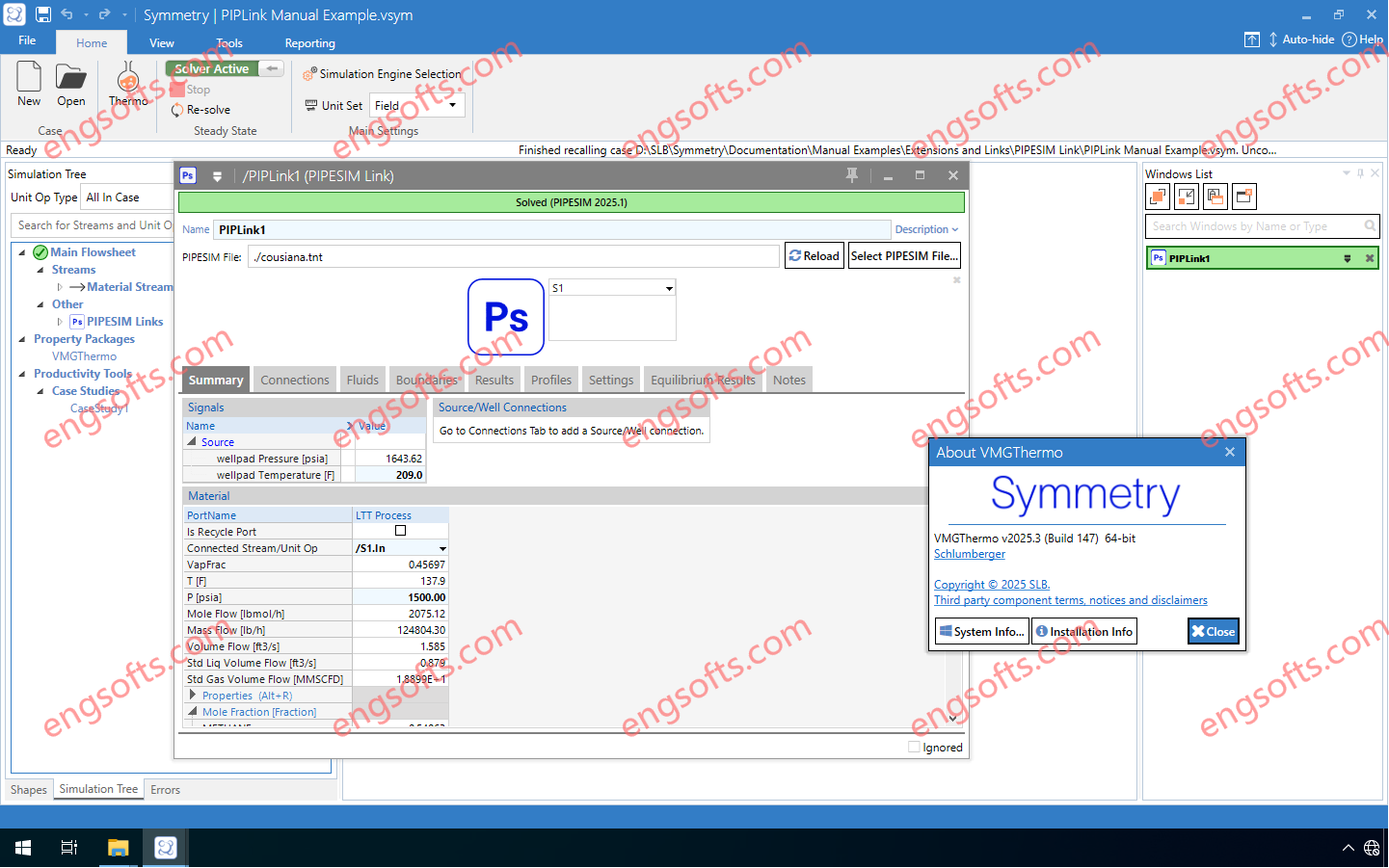Symmetry, a process software platform, is a comprehensive simulator that captures all aspects of your models from reservoir to product distribution. The Symmetry platform is built using VMG’s industry proven simulation technologies that have been optimized to scale to your engineering needs. The Symmetry platform uniquely integrates the modeling of fields, pipe networks, process plants and flare systems, providing an unprecedented level of collaboration. The Symmetry platform is designed with flexibility in mind. It can be used to model a specific application or to create a comprehensive model that may span from the field through different types of facilities. Everything using a consistent thermodynamic engine. If you are a VMGSim user you will feel right at home since the Symmetry platform builds upon familiar workflows and a powerful core of process simulation technology that comes from VMGSim.
Available versions: 2025.x ,2024.x ,2023.x ,…
Schlumberger Symmetry 2025.3 Tested Picture
Release highlights in Symmetry 2025.3
Symmetry™ process simulation software helps users model process workflows in a single collaborative environment. It integrates pipelines, pipe networks, facilities models, and flare systems to enable consistent thermodynamics and fluid characterization across the whole system.
With Symmetry software, users can switch between steady-state and dynamic modeling, optimize processes in upstream, midstream, downstream, and new energy sectors, and maximize the total value of the asset.
Symmetry 2025.3 introduces a range of enhancements, including improved accuracy of Vapor-Liquid Equilibrium predictions (VLE) results for CO2 mixtures, expanded analysis capabilities within the optimizer, greater flexibility for specifying non-ideal stages in rate-based towers, and improved workflows for the built-in process flow diagram (PFD) engine, among other additions.
Flaresim software: share fluids across multiple cases
Flaresim™ flare systems design and analysis software’s new functionality makes it easier than ever to select and copy fluids from one case to another using a simple, streamlined workflow. This enhancement saves time and ensures consistency by transferring all fluid data, including original input values and calculated results, so everything stays aligned and audit-ready across cases.
This functionality is available for fluids characterized using Flaresim software, Symmetry software, REFPROP, and WellTestAPI methods.
Investigate the impact of optimizer variables through sensitivity plots
A new sensitivity analysis feature has been added to the Optimizer as a dedicated tab, allowing users to investigate how individual manipulated variables affect the objective function and constraints. This enhancement helps identify which variables have the greatest impact, enabling more informed decisions around variable prioritization and constraint adjustments. To make the data easier to interpret, the feature includes a sensitivity plot that visually illustrates these relationships.
Improved results for CO2 mixtures with APRNG2
Improvements in Vapor-Liquid Equilibrium predictions (VLE) predictions for CO2 containing mixtures are now available with the APR for Natural Gas 2 thermodynamic model. Updates include refined binary interaction parameters for CO2 with SO2, O2, N2, CO and Ar, resulting in better alignment with experimental data. Additionally, enhanced ternary behavior of CO2/Ethanol/Water systems supports more accurate simulations for bioethanol-related applications.
Rate-based towers expanded capabilities
The rate-based tower now offers enhanced flexibility for configuring non-ideal stages, introducing a broader range of specification options. Draw streams on rate-based stages can be defined using either mole flow rates or draw-to-feed ratios. Similarly, energy inputs on rate-based stages can now be specified per fluid phase using direct duty values or duty-to-feed ratios. Additionally, the rate-based tower now supports the inclusion of pump-arounds and vapor slips, which can be configured using mole flow rates and a choice of duty, return temperature, or temperature difference.
Enhanced workflows for opening cases with the built-in PFD
Symmetry software provides a seamless workflow for opening cases when their PFD settings do not match the last saved PFD engine of the case. Upon opening a case, users are prompted to choose between Microsoft Visio® or the built-in PFD engine, enabling case specific customization. Enhanced workflows for the built-in PFD engine, allowing easier case opening and conversion from Microsoft Visio® to the built-in PFD, subject to feature compatibility. However, conversion from the built-in PFD back to Visio is not supported.


 ID:softmed
ID:softmed ID:956575828
ID:956575828
Must log in before commenting!
Sign Up